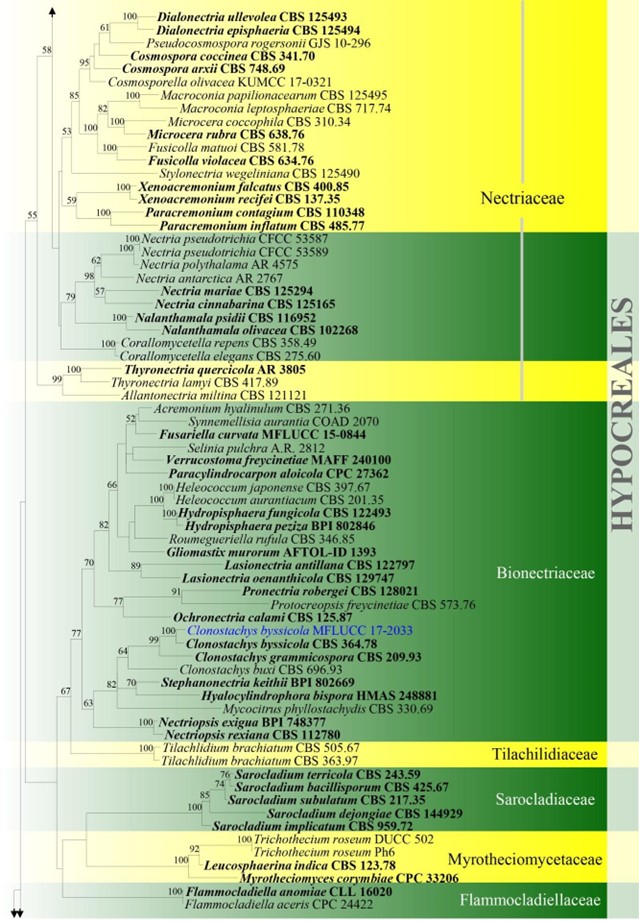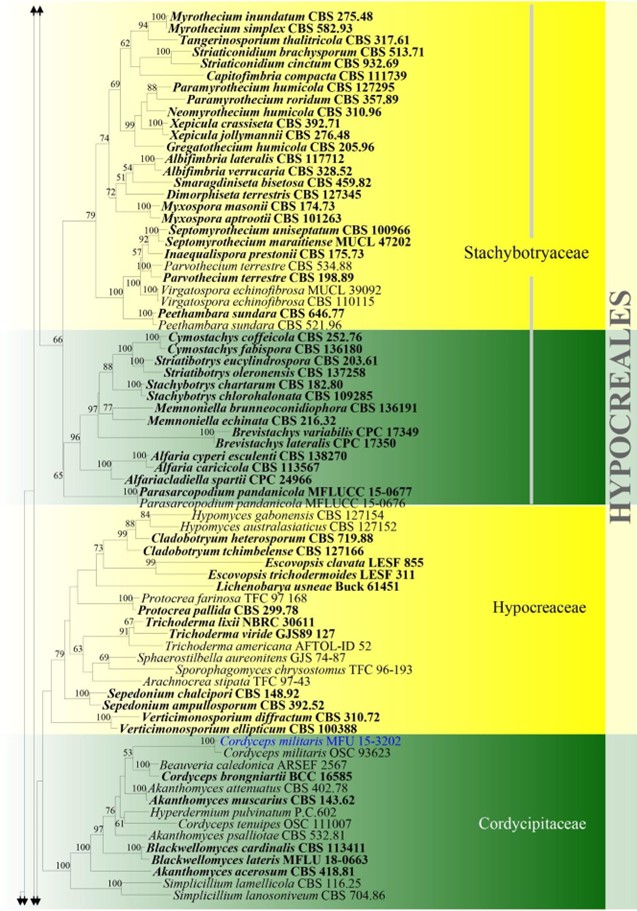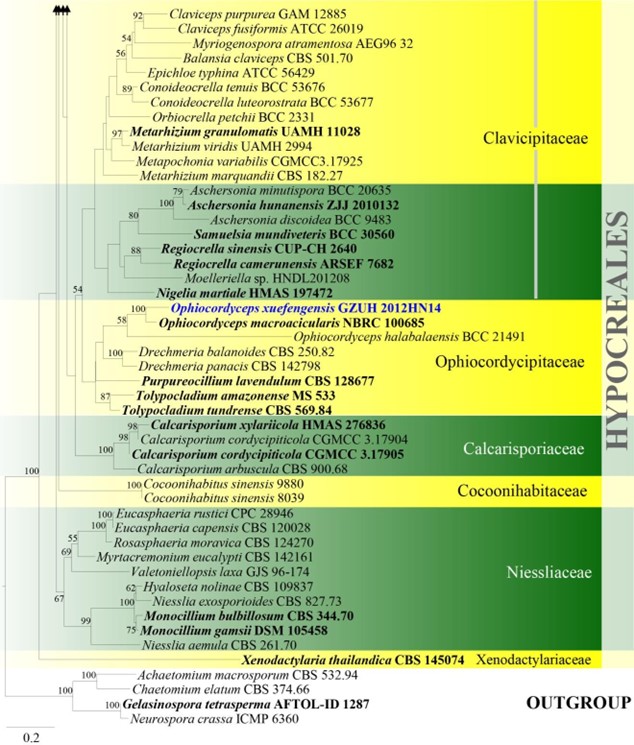Flammocladiellaceae Crous, L. Lombard & R.K. Schumach., Sydowia 67: 103 (2015)
MycoBank number: MB 819623; Index Fungorum number: IF 819623; Facesoffungi number: FoF 06873; 2 species.
Fungicolous on Massaria spp. on corticated branches of Acer spp. Sexual morph: Ascomata perithecial, pale luteous to yellow-orange, aggregated in clusters, on a single stromatic base, covered in a dirty white crustose layer, turning pale luteous to dirty white, KOH-, ostiolate. Ostiole papillate, periphysate. Peridium 3–4 layers of subhyaline, smooth-walled cells of textura angularis. Asci 8-spored, unitunicate, fusoidal-ellipsoidal to subclavate, hyaline, smooth-walled. Ascospores fasciculate, hyaline, fusoidal-ellipsoidal with obtuse ends, septate, warty, not to slightly constricted at septa. Asexual morph: Conidiomata sporodochial, determinate, hyaline, becoming orange. Conidiophores subcylindrical, septate, branched. Conidiogenous cells subcylindrical, terminal and intercalary, hyaline, smooth-walled, proliferating sympodially at apex. Conidia slimy, solitary, granular to guttulate, straight to gently curved, subcylindrical to narrowly obclavate, hyaline, smooth-walled (adapted from Crous et al. 2015b).
Type genus – Flammocladiella Crous, L. Lombard & R.K. Schumach.
Notes – Flammocladiellaceae was introduced to accommodate the monotypic genus Flammocladiella by Crous et al. (2015b). In the molecular analysis by Hongsanan et al. (2017) and Sun et al. (2017), Flammocladiellaceae grouped within Clavicipitaceae, hence was not treated as a separate family. Further, Hongsanan et al. (2017) synonymized Flammocladiellaceae under Clavicipitaceae based on phylogenetic data and this was followed by Wijayawardene et al. (2018a). However, in the molecular clock analysis by Hyde et al. (2017a) Flammocladiellaceae forms a separate clade sister to Clavicipitaceae with low statistical support. Similar results were obtained from phylogenetic analysis by Maharachchikumbura et al. (2016b) and Lechat & Fournier (2018). Hence, we would like to treat Flammocladiellaceae as an accepted family within Hypocreales, based on previous treatments and our phylogenetic analysis (Fig. 15).

Figure 15 – Phylogram generated from maximum likelihood analysis based on combined LSU, ITS, cmdA, rpb2, tef1 and tub2 sequence data for Hypocreales. Two hundred sixty six strains are included in the combined analysis which comprised 4731 characters (890 characters for LSU, 906 characters for ITS, 557 characters for cmdA, 862 characters for rpb2, 1163 characters for tef1, 348 characters for tub2) after alignment. Single gene analyses were carried out and the phylogenies were similar in topology and clade stability. The best RaxML tree with a final likelihood value of – 143259.087299 is presented. Estimated base frequencies were as follows: A = 0.238481, C = 0.265503, G = 0.275795, T = 0.220220; substitution rates AC = 1.361350, AG = 3.162200, AT = 1.584547, CG = 1.000927, CT = 7.415164, GT = 1.000000; gamma distribution shape parameter a = 0.592521. Bootstrap support values for ML greater than 50% are given near the nodes. The tree is rooted with Achaetomium macrosporum CBS 532.94, Chaetomium elatum CBS 374.66, Gelasinospora tetrasperma AFTOL-ID 1287, and Neurospora crassa ICMP 6360. Ex-type strains are in bold. The newly generated sequences are indicated in blue.

Figure 15 – Continued.

Figure 15 – Continued.

Figure 15 – Continued.
Species
